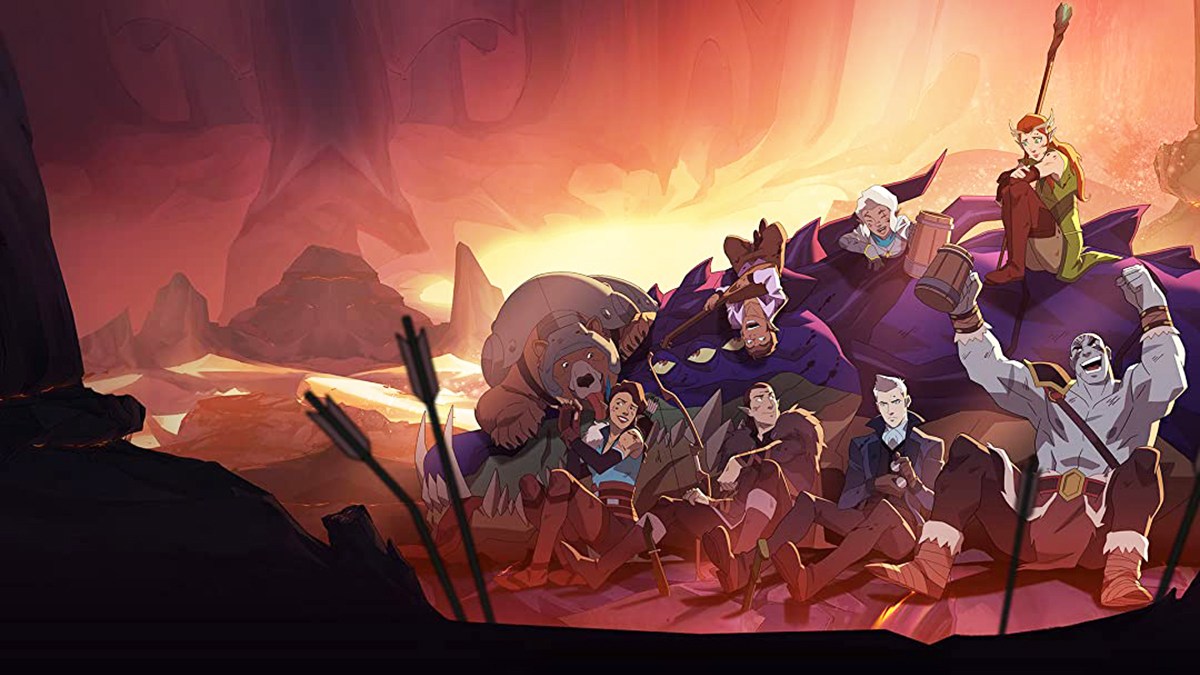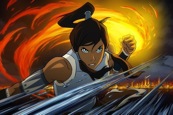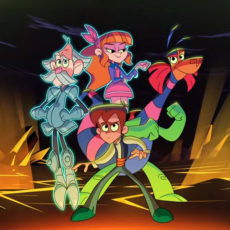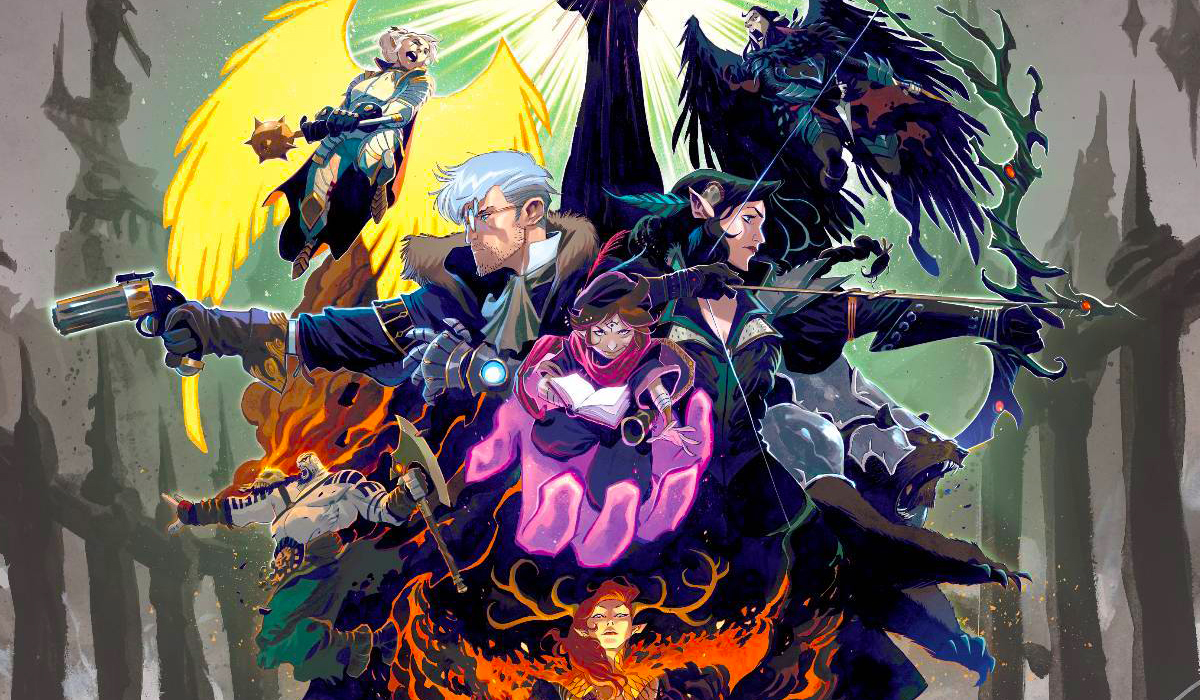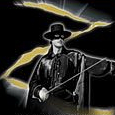In 2015, the internet streaming channel Geek & Sundry introduced Critical Role, a live broadcast of Dungeons & Dragons gaming sessions played by well-known animation voice actors Matthew Mercer, Ashley Johnson, Laura Bailey, Travis Willingham, Liam O’Brien, Sam Riegel, Taliesin Jaffe, and Marisha Ray. What started as a home game amongst friends would unexpectedly transform into a pop culture phenomenon. The success of Critical Role has spawned graphic novels, books, billboards, live shows, art exhibitions, and more, the likes of which generally unimaginable from the gaming sessions of a tabletop roleplaying game. Given the profession of the players, it seemed inevitable that their stories would be brought to life in animation. And thanks to one of the most wildly successful crowdfunding campaigns, that dream has come to fruition with The Legend of Vox Machina.
The Legend of Vox Machina is a retelling of the adventuring party from the first campaign of Critical Role. Vox Machina is made up of naïve half-elven druid Keyleth (Ray), cynical human gunslinger Percy (Jaffe), gentle gnome cleric Pike (Johnson), contemptuous half-elven rogue and ranger twins Vax (O’Brien) and Vex (Bailey), meathead goliath barbarian Grog (Willingham), and debauchee gnome bard Scanlan (Riegel), along with Vex’s bear companion Trinket. When they’re introduced, the party is hardly the sort of ragtag mercenaries to be considered as the saviors of Tal’Dorei, the continent upon which they call home. They’re more concerned about getting whatever coin they can get. It is out of desperation that they answer the Sovereign’s call for aid against a growing threat of darkness and as a result they find themselves in way over their heads contending against powerful forces of evil.

At its essence, Dungeons & Dragons is a group of people coming together to collaborate and improvise in their telling a story. The Dungeon Master serves as a guide and the players roll dice to determine how affective their actions are with the results impacting how the story goes. Thus the success of Critical Role can be attributed towards the storytelling abilities of Mercer as Dungeon Master and the others participating, with an emphasis on world-building and using the results of their dice rolls to create thrilling moments. An episode of the broadcast averages between 3-5 hours. The show’s first campaign, from which The Legend of Vox Machina is based off of, ran for 115 episodes. This provides hundreds of hours of content from which to use in adapting the stories told into a thirty-minute episodic series, not counting the hundreds more from the games played before they started broadcasting.
Working with the Critical Role party on tackling what would be a daunting yet intriguing task are a team of writers headed by Brandon Auman and Jennifer Muro. Together, they have labored to craft the overall narrative in a fashion that allows for viewers unfamiliar with Critical Role to be able to jump in without worry while pleasing those who had been engrossed in the fantasy adventures every Thursday night for years. To that end, they are successful in making The Legend of Vox Machina enjoyable to watch for any one interested in what all the fuss is about. Effort is taken to make sure that the series did not fall into the usual trappings in adapting material into another medium, spending time to allow for the stories and characters to develop while making sure only pertinent moments and events are presented. All the while the action would move along at a comfortable and exciting pace.
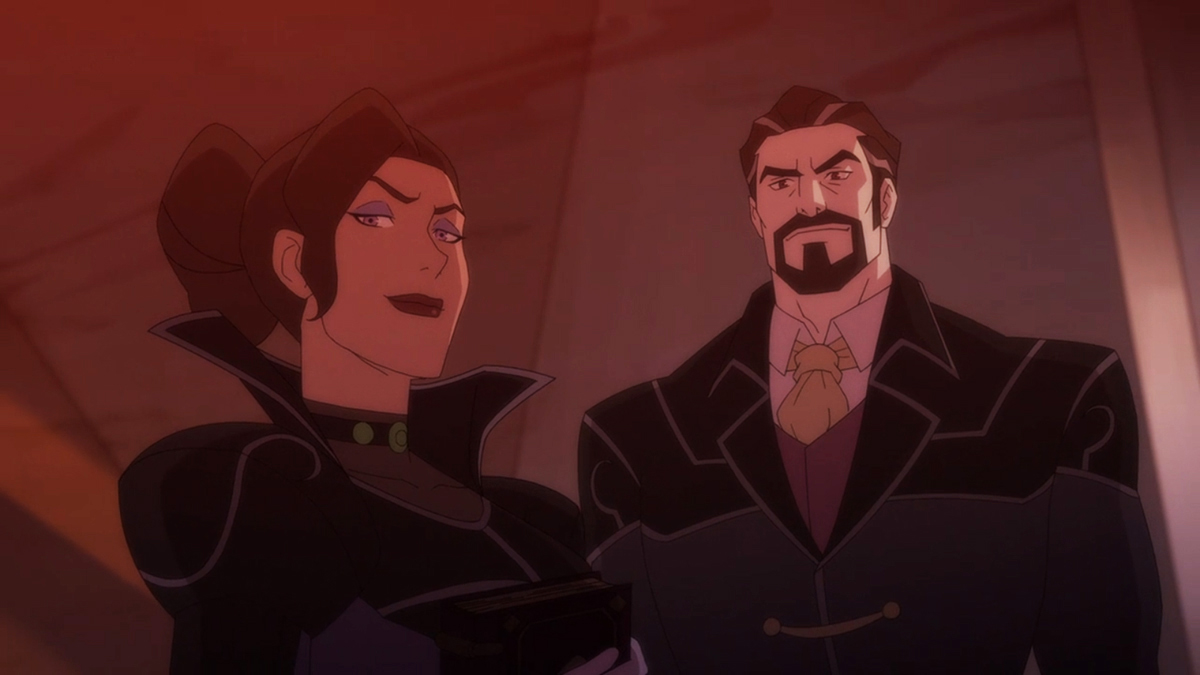
The first season is made up of twelve episodes. The first two episodes take a major event from the original home games, utilizing it to serve as the foundation upon which to reintroduce Vox Machina and set about their eventual growth as the unexpected saviors of the land. The remaining episodes adapt an early story arc from the broadcast, establishing Percy’s haunting and tragic backstory against a thrilling gothic drama of revenge and revolution. Both stories provide a fascinating exploration of Tal’Dorei and its inhabitants, presenting a realm of unique wonder and beauty destined to enchant viewers to want more as the series progresses. Much of the appeal lie in how familiar fantasy elements are mixed with modern influences, sewn together to create a majestic world that stands out from similar settings without being too different to be disconcerting for any one to watch.
Tal’Dorei may be vast and colorful, the world-building doesn’t overshadow the primary characters and their development. Both narratives flow at even paces so that the personalities of each party member could shine and remain true while acting upon whatever situation they found themselves stumbling into. Percy receives the most attention given the importance his heartbreaking backstory plays through the majority of the first season, though some of the others manage to receive enough of the spotlight for them to flourish with their own personal stories. The biggest highlights would be the evolution of Keyleth from shy girl to experienced warrior and Pike’s balancing between her friendship with the party with her devotion to her deity The Everlight. Despite the many flaws of which a few would often be proud of having, they are truly be characters audiences can grow to care for.
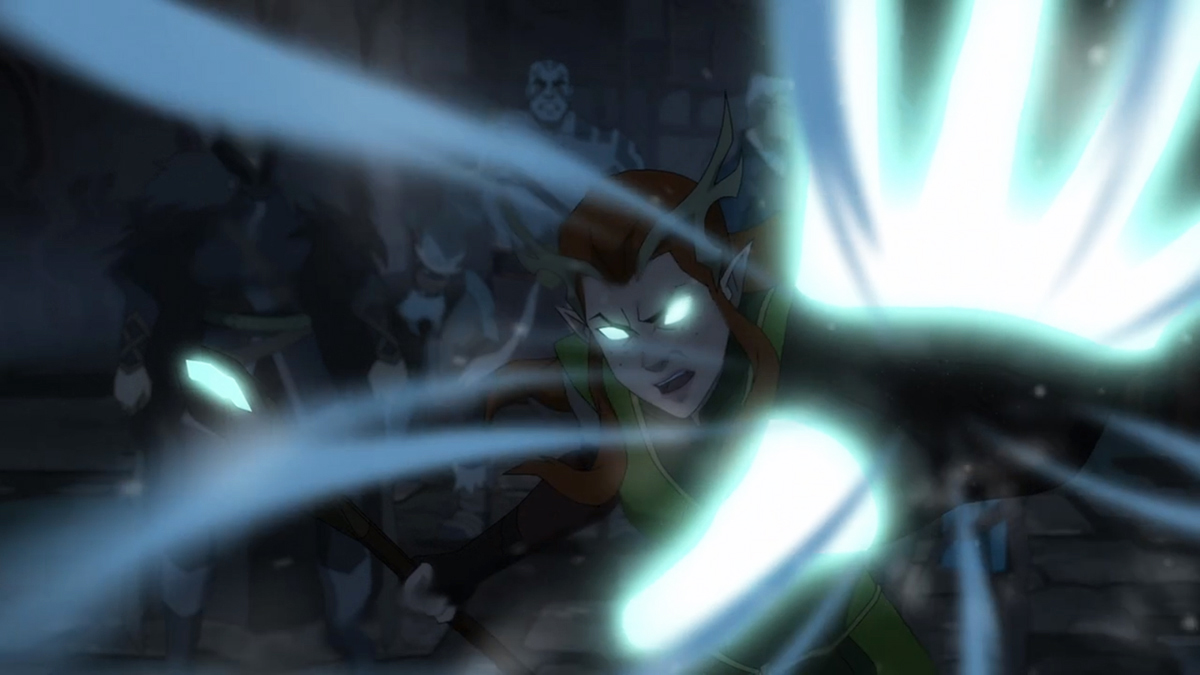
Of course, the biggest attraction to the series is that it is bringing the Critical Role stories to life through animation. To that end, they enlisted the services of Chris Prynoski and his studio Titmouse, Inc. Having worked on a vast array of shows in a wide variety of visual styles, the animation crew at Titmouse were more than up to the task of realizing a world and its inhabitants that had been created with the roll of some dice. Bringing aboard character designer Phil Bourassa, they are able to wonderfully redefine the look of the characters to move gracefully in animation while managing to maintain much of the features fans have adored over the years. Applying the same approach to the animated features of DC Comics superheroes in being illustrated with a stark graphic look with some fluidity to their motions, there’s a believability to how alive the characters are presented on screen.
The visual look of Tal’Dorei as a whole is lovingly made with a great many frames worthy of being paused so the beauty could be admired. The colors are quite vibrant, even when scenes occur in darkness and shadows. Like the storytelling, the art designs take the familiar approaches of the fantasy genre and infuse elements of modern aesthetics to create a fascinating sight of a world that is unique as it is comfortable. As is with how Mercer would describe actions in the broadcasts, there’s a great deal of inspiration from many of the anime and video game titles the cast had done voice work on. From the framing of fight scenes to the occasional exaggerated effects of character movements or reactions, they add to setting the visual approach of the series further apart from similar fantasy programs. It’s enough to elicit some awe at how everything comes together swimmingly.
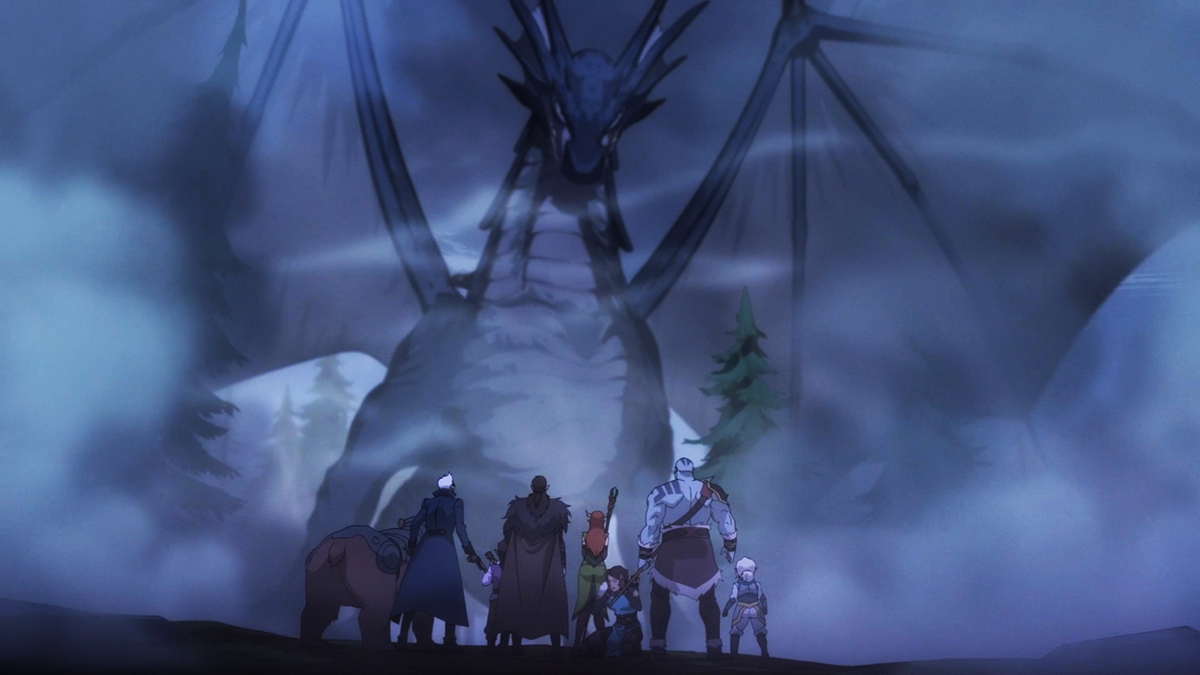
Even with the original premise having been voice actors playing Dungeons & Dragons, it cannot be understated how fantastic the performances are throughout the series. The core cast took the lines they had spoken before in the broadcasts and elevated them with some really dramatic deliveries. Kudos to Jaffe as he upped his game ten-fold in adding greater weight of pathos to Percy. Ray is an absolute delight, hitting all of the right notes for Keyleth throughout her evolution. Even Mercer, voicing characters such as the antagonistic Sylas Briarwood, would pour himself into delivering wonderful performances. They are bolstered by a star-studded ensemble supporting cast that includes David Tennant, Dominic Monaghan, Grey Griffin, Esmé Creed-Miles, Khary Payton, Kelly Hu, and more, bringing their A-game to help breathe magnificent life into the majestic world of Tal’Dorei.
Alongside the fantastic vocal performances is an outstanding music score by Neal Acree. The seemingly typical epic orchestra melodies that would generally accompany pretty much anything set within the fantasy genre are given unique arrangements that set it apart from other similar scores. Be it the inclusion of electric guitar riffs during exciting battles or the use of organs as part of the gothic horror themes played when exploring Percy’s haunting backstory, the music does wonders in elevating and bolstering the scenes to greater heights of thrilling drama. For kicks, there are a couple songs by Riegel thrown in to play along with his character being a bard. Much like Scanlan in general, some of the songs are fairly lewd in how they are performed, but they are nonetheless quite funny and once in a while help in lightening things up in the middle of situations that are otherwise serious.
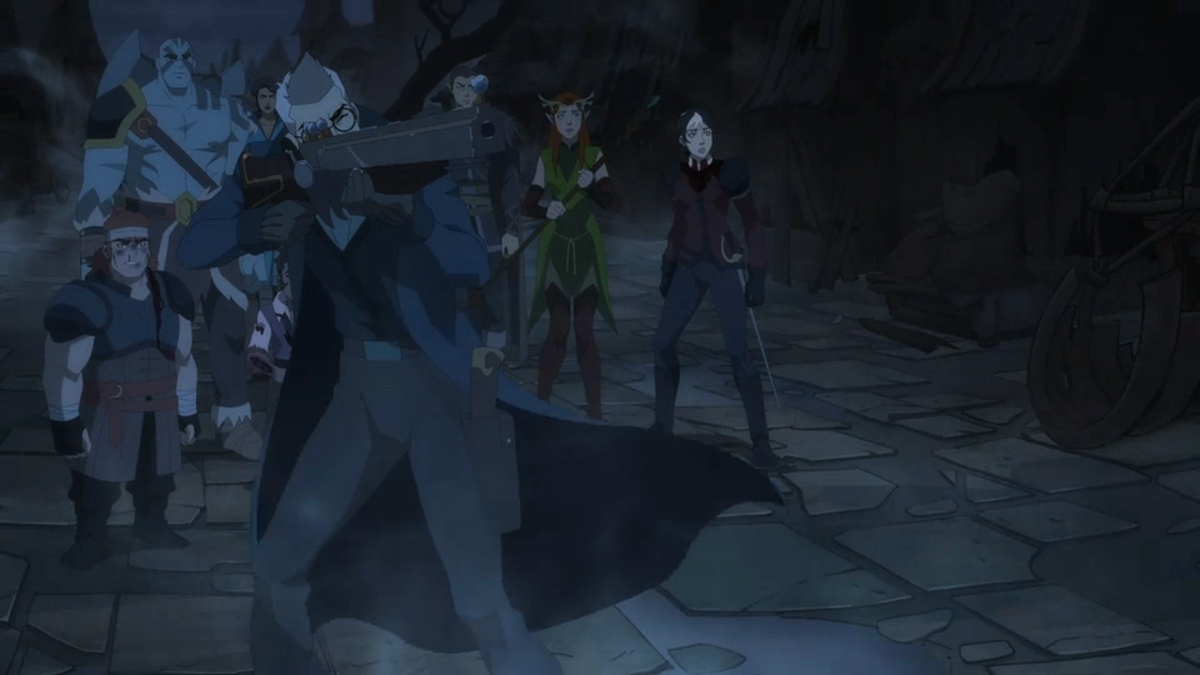
The Legend of Vox Machina is the latest in a growing breed of animated programs aimed specifically for adults. The show revels in very adult themes and content due in large part to the influence of the anime and video games the main cast previously worked on and Mercer applied to the Critical Role broadcasts in great detail. These include some really ultra violence, very heavy profanity, and a couple sexual situations present. It’s enough to be quite shocking at first, certainly when the series kicks off with gory mayhem upon the first minute. While the writers do a lovely job adapting the material and ensuring growth and development with the storytelling, pacing could at times feel a little slow even considering that hours of roleplaying is being crammed into thirty minute episodes. And a couple of the main characters, in particular Grog, do not necessarily have much in interesting personal story arcs.
The unimaginable success of broadcasting the Dungeons & Dragons games played by animation voice actors has led to a dream fulfillment far greater than any one could have thought possible. The Legend of Vox Machina gloriously reintroduces and retells the stories of the characters and world first developed in a tabletop roleplaying game amongst friends, transforming into an animated series lush with majestic visuals, thrilling narratives, and colorful characters that any viewer, regardless of any familiarity with Critical Role, could watch and become emotionally invested in. Presented is an inspired and unique world of wonder brought to life with breathtaking, graphic animation and vocal performances that were delightful and magnificent to hear. The Legend of Vox Machina is crafted with great love and passion, resulting in a show that is nothing less than a critical success.
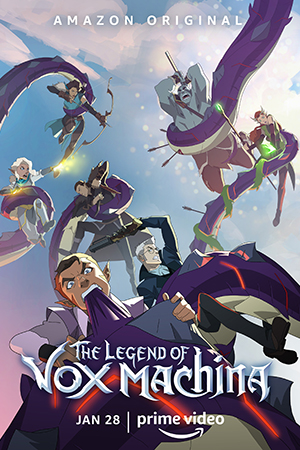 | The Legend of Vox Machina Critical Role Productions/Titmouse, Inc. Available only on Amazon Prime Video Streaming 25 minutes Rating TV-MA Created by Critical Role | |


